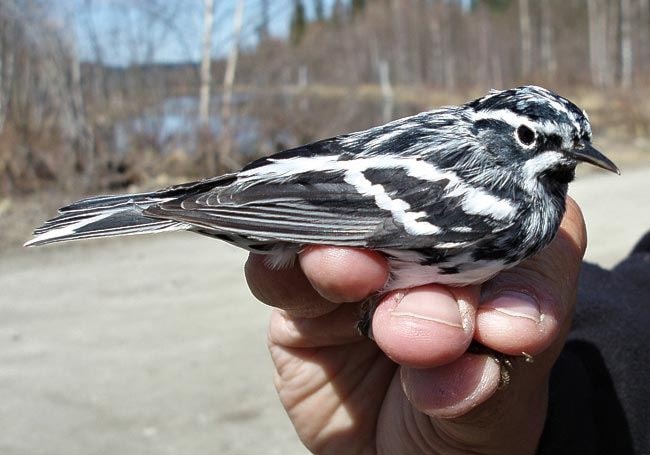Wilson’s warbler is a tiny yellow bird with a small black cap.
They’re one of the most common songbirds in southern Yukon, but Ted Murphy-Kelly has met his share of longtime residents who are surprised to learn they share the territory with the bird.
“Because they’re hard to see, moving about so fast in the trees, a lot of people never notice them,” he says.
Such modest behaviour must help evade predators.
And government funding.
Yukon’s Department of Environment has cut money to study songbirds to just $4,000 in 2009-10 from $15,000 last year.
As a result, the Albert Creek Bird Observatory, which Kelly helps run, will operate on shortened seasons this year and depend more on volunteers.
And Teslin Lake Bird Observatory will not operate at all this spring because of the cutbacks.
Nancy Campbell, a spokesperson for Environment, was unable to explain the funding cuts, other than to say “priorities change from year to year.”
She added the department faces a five per cent decrease in operations and maintenance money this year.
But Kelly has an answer.
“Birds come second to big, furry animals,” he said.
Kelly started the Albert Creek Bird Observatory, outside Watson Lake, in 2001, shortly after he moved to the Yukon.
It’s located just 15 minutes north of Watson Lake off the Alaska Highway, and every summer the surrounding marshland and spruce stands come alive with the chirps and twitters of migrating songbirds.
It’s the northern range for species such as the American redstart, magnolia warbler, white-throated sparrow and Cape May warbler.
Not much is known about songbird populations in the Yukon. Kelly is convinced tracking their numbers would prove to be of value to science.
The population of songbirds has declined significantly since the 1960s. Acid rain and deforestation in Central and South America, where the birds migrate, have both been blamed for the drop in bird numbers.
Meanwhile, songbirds have been observed pushing farther north as the world warms.
The Cape May warbler, until now only known to venture as far as the extreme southeast corner of the territory, appears to be gaining a foothold in the Liard basin, said Kelly.
One was caught in Teslin last year.
Tracking such efforts takes time and patience, but not a whole lot of money, especially when compared against Yukon’s budget of more than $1 billion for 2009-10.
Each station in Albert Creek and Teslin costs about $45,000 annually to run. Most of that money goes towards paying certified bird banders who have spent many years of training to learn how to handle the fragile birds, which are caught with nets, without harming them.
The observatories collect money from numerous sources, but funds from the Environment Department has proven especially valuable in the past, said Kelly.
Following the global economic downturn, everyone seems to have less money for bird research.
Both observatories currently depend on a small group of volunteers who devote hundreds of hours every year to the operations. More volunteers will likely be needed to keep the observatories running with less money.
Several school classes typically make field trips to the observatories in a year. Kelly and Ben Schonewille, who operate the Teslin observatory, hope to boost this number, even with funding cuts.
They plan to open an observatory in Whitehorse within the month for this purpose. They’ll run it by volunteering their time.
“We want to engage more of the public,” said Kelly.
Teach people to see the birds singing in the trees, and maybe it will become easier to pry money from the government to run observatories.
That’s the hope, anyhow.
Contact John Thompson at
johnt@yukon-news.com.
